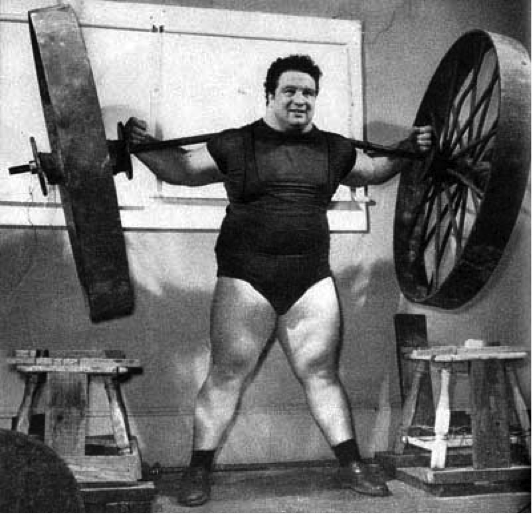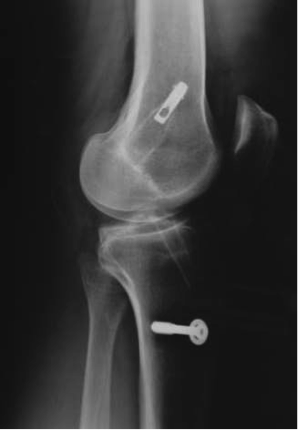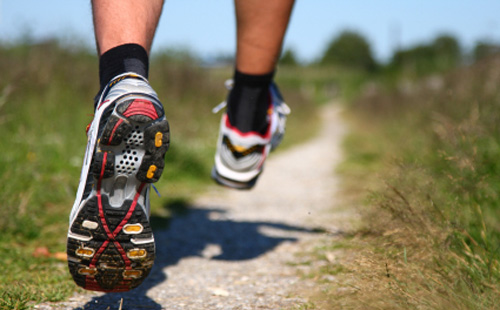Strength training for runners is a some-what controversial topic, especially given the large amount of variability in regards to what methods different practitioners, coaches and runners think work best. I guess there are really two questions when deciding if formulating a well-conducted strength program can help with your running. One, will the physical increase in strength increase my performance? And two, will the strength work help prevent injury and therefore allow me to train more consistently, thus indirectly increasing my running capabilities?
Both are valid points, lets have a look at both in greater detail.
DOES INCREASED STRENGTH EQUAL INCREASED PERFORMANCE?
One would assume that if you increase the amount of power you can produce in the muscles that propel locomotion, this would lead to an improved running performance, right? Well what research is out there that either supports or refutes this idea?
There is good evidence to support the use of high-intensity strength training to improve endurance running performance. Sedano et al., (2013) conducted a study where by 18 well-trained male endurance runners were split into 3 groups; an endurance group (EG), a theraband and endurance group (SG) and a combined resistance, plyometric and endurance group (ESG). The study found that after 12 weeks of training the SG and ESG groups had increased their muscle strength, running economy, peak running velocity and improved their 3km time-trial performance. There was no change noted in the participants VO2 max.
Furthermore, a study by Storen and colleagues (2008) again looked at the effects of maximal strength training in combination with endurance training and its effects on running economy. The study consisted of 17 well-trained runners broken up into two groups. The Intervention group conducted their normal endurance running program in conjunction with three sessions per week of 4 sets of four reps of half squats. The control group consisted of the participants only completing their normal endurance running program. The results of the study found an increased one repetition max of a half squat, an increased rate of force development, increased time to exhaustion, but again no changes in body weight or VO2 max.
So there is research to support the efficacy of strength training in well trained endurance runners, but what about in recreational runners? A paper Mikkola et al. (2008) investigated the effects of resistance training programs on the running performance of recreational endurance runners. The study went for 8 weeks (after a 6 weeks preparatory training period) and consisted of three groups; a heavy resistance group, an explosive resistance group and a muscle endurance training group all in conjunction with their normal low-intensity endurance running training. After the 14-week training period maximal endurance running performance was improved in all groups, whist the heavy and explosive resistance groups exhibited further improvements in maximum running speed and anaerobic performance. Interestingly, maximal endurance performance was improved, despite no changes in running economy or VO2 max. However, the muscle endurance-training group was considered the control group, given the low-intensity nature of the exercises that this group was instructed to do. Personally, I would have preferred a more strict control group consisting of only endurance running.
However, not all research shows positive results for the effects of strength training on endurance running performance. A study by Farrauti et al., (2010) examined the effects of concurrent strength and endurance training on the running performance and running economy of recreational marathoners. The study took place over an 8-week period, consisting of two groups; a combined endurance running and strength training group and an endurance only group. At the end of the 8-week period, the results showed that despite an increase in lower limb muscle strength, there was no changes found in endurance running performance or economy and of course, no changes in VO2 max.

WILL STRENGTH TRAINING PREVENT INJURY AND THEREFORE INDIRECTLY IMPROVE MY RUNNING?
As most endurance athletes and coaches know, a very important factor in maximal endurance performance is consistent, injury free training. Thus, the emergence of the idea that proper strength and conditioning training can prevent injury and thus indirectly improve endurance performance by allowing athletes to train more consistently. Research is relatively scarce on this topic given the challenges of designing an experimental protocol that accurately measures the differences in injury rates between the two conditions (we currently have the same problem with minimalist running versus typically shod running injury rates, which you can read about in this previous blog post). An article that I really like in relation to this topic is a review article by Chuter and Janse de Jonge (2012) entitled ‘Proximal and distal contributions to lower extremity injury: A review of the literature.’ The authors compare the relationship between over-pronation (emphasis added) and lower extremity injury vs. the relationship between a lack of core stability (in the form of hip abduction and external rotation weakness and poor neuromuscular control of the lumbopelvic and hip complex) and lower extremity injury. The review found that poor core-stability is implicated in the development foot and ankle injuries, ITB friction syndrome, patello-femoral pain and ACL injury. Whilst over-pronation had the potential to cause medial tibial stress syndrome (MTSS) and exercise related lower-limb pain (ERLLP), but no other running related injuries.

It would seem obvious then that all athletes, or any one who exercises for that matter, should be doing some sort of core stability work with an emphasis placed on strength of the hip and lumbo-pelvic regions. But will core-stability training increase running performance?
You would think that if a runner can increase their stability through their hips and pelvis they would be able to run more efficiently. A metaphor I like to use, one that I found in the book Anatomy for Runners by Jay Dicharry is that having good stability is like firing a cannon from land, whereas having poor core stability is a bit like firing a canon from a canoe. The shot from the canoe will be far lass powerful than the canon shot from land. Though very simplistic, I think this is an excellent way to get runners to understand how important core-stability training is in relation to their running heath. So yes, core-stability training should help running performance indirectly, but as far as it directly increasing performance, there is a bit more research to be done yet.
MY OPINION (IF YOU’RE INTERESTED)
I think a specific, properly designed strength training program for runners is crucial to ensure both maximal running performance and also long-term running health. As far as what constitutes the strengthening program, that is not quite as simple to decide. The most important factor in designing a strength training program for athletes is specificity. The first and most important step in developing specificity in one’s training program is a detailed history, this will include things such as the runners previous injury history, what their goals are, how much training they are doing, how fast do they run, etc., etc. From here a clinical assessment (in conjunction with the history) should be able to relatively accurately determine if a runner has strength deficiencies that need to be remedied. All the studies I have looked at are mainly focused on strengthening in the sagittal plane, however, I think ideally, a runners strengthening program should have a large multi-planar emphasis, especially on the somewhat neglected transverse and frontal/coronal planes. After all, doesn’t strengthening all three planes constitute core stability?
WHERE DO THESE EXERCISES FIT INTO MY TRAINING SCHEDULE?
Once the strengthening program has been formulated, some runners can be unsure as to where it fits in to their training program. Personally, I advise runners to do their exercises after their runs and at least 2-3 times per week. And if time is an issue, I would suggest reducing the distance of some runs, or even cutting back one run a week, to better focus on their strength training, especially during the off and pre-seasons.
CONCLUSION
There appears be good evidence in support of high intensity weight training to improve endurance running performance, presumably form a local and neuro-muscular mechanism. There is also good research to show that core-stability training can help deter running related injury and therefore indirectly improve running performance. If a runner could find the right mix between these two interventions, this could be the best possible way to improve both running performance and long-term running health.
If this is something you are lacking in your training or would like to refine your strength program then please contact our Exercise Rehabilitation Consultant, Dr Jessica Fetterplace or one our experience team of Osteopaths. You can phone us on 03 9939 1289 or book online via our website: http://melbourneosteopathycentre.com.au/make-a-booking/
QUESTION TO READERS
How have you incorporated strength training into your program and in what way has it benefited your performance? This post was authored and referenced by Dr Nicholas Tripodi ( Osteopath and Lower Limb Biomechanics Specialist Melbourne Osteopathy Sports Injury Centre )
REFERENCES
Chuter, V., & Janse de Jonge, X. (2012). Proximal and distal contributions to lower extremity injury: A review of the literature. Gait and Posture, 36, 7-15.
Ferrauti, A., Bergermann, M., & Fernandez, J. (2010). Effects of a concurrent strength and endurance training on running performance and running economy in recreational marathon runners. Journal of Strength and Conditioning Research, 24(10), 2770–2778.
Mikkola, J., Vesterinen, V., Taipale, R., Capostagno, B., Häkkinen, K., & Nummela, A., (2011). Effect of resistance training regimens on treadmill running and neuromuscular performance in recreational endurance runners. Journal of Sports Sciences, 29(13), 1359-1371.
Oyvind, A., Helgerud, K., Stoa, E., & Hoff, J. (2008). Maximal Strength Training Improves Running Economy in Distance Runners. Journal of Medicine and Science in Sports and Exercise, 40(6), 1087–1092.
Sedano, S., Marín, P., Cuadrado, G., & Redondo, J. (Pub Ahead of Print). Concurrent training in elite male runners: The influence of strength versus muscular endurance training on performance outcomes. Journal of Strength and Conditioning Research. DOI: 10.1519/JSC.0b013e318280cc26.


